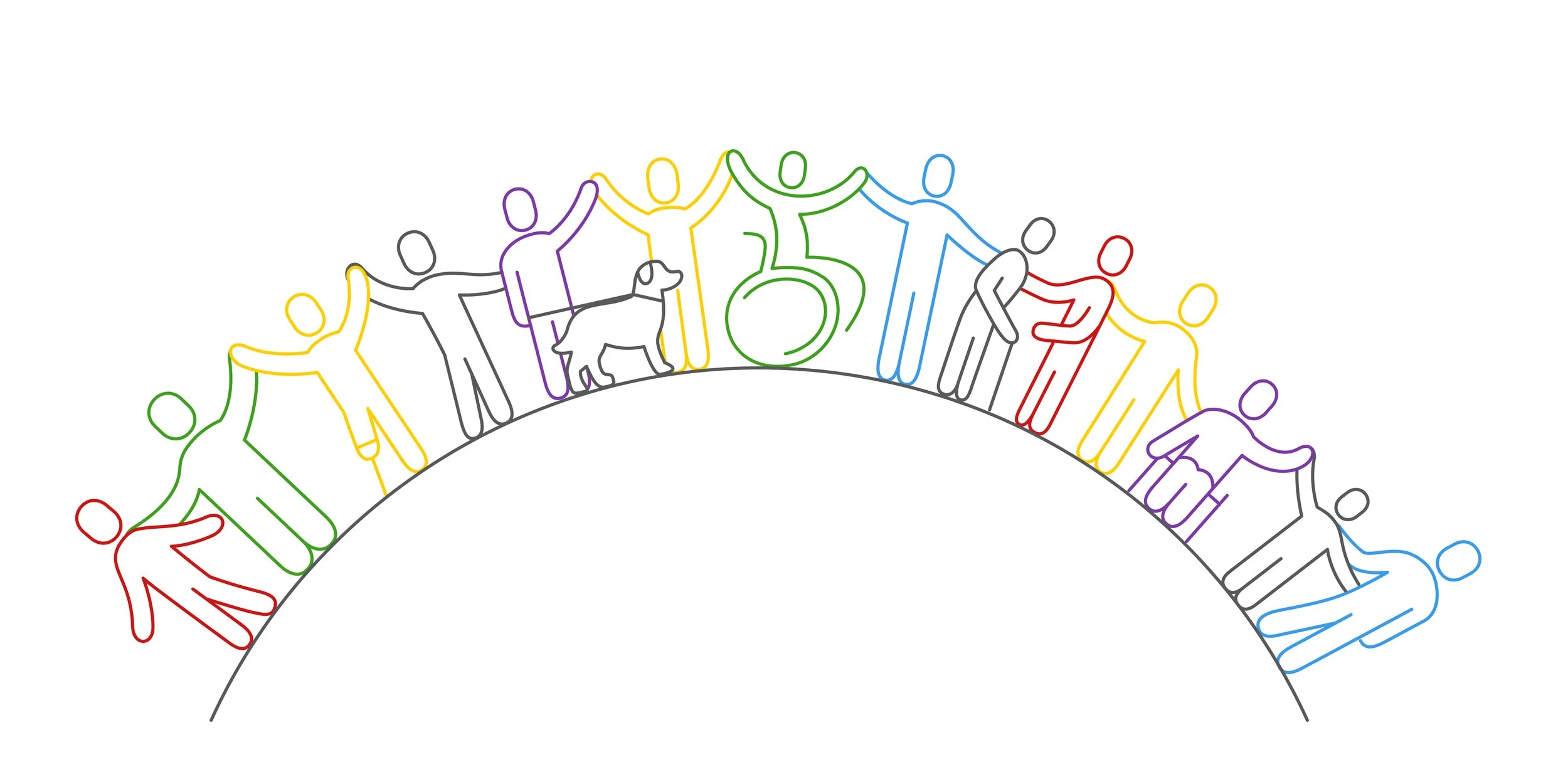In this blog, we will explore unconscious biases in healthcare, reviewing not only statistical disparities but also individual patient treatment, what specific biases impact healthcare professionals, and how healthcare professionals can address these biases. We have a lot to cover, so let’s get started!
Biases in Healthcare
All people experience unconscious bias, meaning it should come as no surprise to acknowledge that healthcare professionals, too, experience various forms of bias. Unconscious bias in particular is most likely to surface “when someone is tired, busy, under pressure, carrying a high cognitive load (a lot on their mind), or when decisions must be made with incomplete or ambiguous information,” meaning healthcare workers, who often work in high-stress environments where the life and well-being of their patients depend on them, are perhaps even more vulnerable to expressing unconscious bias. This commentary is not to suggest healthcare professionals are “more” biased than the general population, but rather that their work can involve split-second decisions, and these decisions might unwittingly rely on implicit stereotypes.
For example, a medical team was struggling to diagnose a child experiencing difficulty breathing. No matter how long they agonized over the x-rays, they couldn’t determine what was afflicting the child. Another doctor, however, not on the medical team, happened to pass by and see the x-rays, immediately declaring that the patient had cystic fibrosis. Why did the medical team struggle to diagnose the child? Because the child was Black, and cystic fibrosis was a “white disease.” This diagnostic struggle was not deliberate and ill-intentioned, but rather a result of unconscious racial bias.
Biases in healthcare go beyond racial forms of unconscious bias, however. Many healthcare professionals struggle with confirmation bias, best understood as “[s]eeking and accepting only information that confirms a diagnosis rather than information that refutes a diagnosis,” which may increase the risk of misdiagnosis if a physician already has a set conclusion in mind. A 2020 study of nurses’ cognitive and perceptual bias, for example, found that as many as 63% of nurses exhibited confirmation bias when treating patients.
Additionally, healthcare professionals also struggle with anchoring bias, i.e. the risk of relying too heavily on the first pieces or most major pieces of information told to them about their patient’s condition. A devastating example of anchoring bias was in 2000, when a 15-year-old boy passed away because attending nurses “interpreted the lack of a blood pressure reading as a faulty blood pressure cuff instead of hypovolemic shock.”
Attribution bias, defined as “the tendency to explain a person’s behavior by referring to their character rather than any situational factor,” also poses difficulty for healthcare professionals. For example, a physician may handwave an overweight patient’s shortness of breath as a product of their weight instead of considering other possible diagnoses.
While these biases are perhaps the most prevalent among the healthcare profession, the National Library of Medicine offers a detailed breakdown of numerous potential biases that can affect healthcare providers. They name the bias, define it, and give a practical example of the bias’s manifestation in medical diagnostics. This breakdown is an excellent resource for anyone seeking further detail!
So, we know healthcare professionals struggle with biases as much as the rest of us. After all, they and we are only human! But how do these biases affect patient care on an individual level?
Individual Effects of Bias in Healthcare
The International Journal for Human Caring first offers some insight into how bias can affect patient care. For one, unconscious bias can impact the warmth and friendliness a practitioner demonstrates to a patient (including facial expressions, body language, and tone of voice), which ultimately impacts how welcome a patient feels in a healthcare environment. In a negative scenario, bias may result in the patient feeling unwelcome and uncomfortable in an environment ostensibly supposed to help them feel better! Bias among healthcare professionals can also affect how much attention a healthcare provider gives patients and even what rooms patients are put in, which may cause a patient to be both emotionally and physically isolated from their caretakers.
Lamar University further assesses that biases among healthcare professionals can result in:
Rushed or inadequate patient assessments
Concerns and questions that are not taken seriously or fully addressed
Less time devoted to patient care
Incorrect diagnoses
Inappropriate treatment plans
Lack of patient follow-up, especially after discharge
In short, on an individual level, unconscious bias can cause medical practitioners to feel detached from their patients and their patients to feel neglected and lacking true care. Consequently, patients who experience discrimination and disengagement from their healthcare providers often delay getting prescriptions and medical care; may use preventative services at lower rates; are less likely to adhere to recommendations from their healthcare providers; and are overall more likely to miss medical appointments. In worst-case scenarios, bias in the medical field has led to dismal health disparities across marginalized communities and even patient death.
Community-Wide Effects of Bias in Healthcare
Healthcare providers treat patients across all communities. From a positive perspective, this gives healthcare providers a rather unique opportunity to be exposed to the innate diversity of the world. A negative consequence, however, is that unconscious bias within the medical field extends across this widespread treatment, resulting in poorer care often being afforded to those most vulnerable.
Racial Discrimination
Racial disparities are one of the most discussed forms of bias amongst medical professionals, and for good reason: unconscious racial bias has resulted in poorer medical treatment across the board for communities of color. A 2016 assessment found that white patients were more likely to be recommended for bypass surgery than Black patients, the reason being that physicians assumed “their Black patients were not as well educated and so would not take part in the necessary physical activity after surgery.” A 2015 study from the World Surgery Journal found that Black patients receiving “major oncological surgeries were more likely to experience post-operative complications, in-hospital mortality, blood transfusions, and prolonged hospital stay.”
Even more frightening is the fact that though these studies are from the mid-2010s, unconscious racial bias still impacts healthcare for communities of color today. In October of 2021, an indigenous woman in Canada died from excess fluid in her lungs because the attending doctors and nurses assumed she was addicted to drugs and suffering from withdrawal (despite having no foundation for this assumption). They sedated her instead of conducting proper examinations when she complained of heart palpitations. The patient had a history of diabetes and cardiomyopathy, meaning her complaints should have warranted immediate testing, but anti-indigenous bias caused her concerns to be disregarded and unfounded racial stereotypes applied to her health, ultimately leading to her death.
Gender-Based Discrimination
Another highly studied form of bias amongst healthcare professionals is gender bias. Given that more than half the world’s population consists of people who identify as women, such attention is appropriate! Truth be told, we might be able to pull aside any woman on the street, ask her if her medical provider has ever disregarded her health concerns, and the answer is heartbreakingly likely to be “yes.” A 2018 review found that health professionals are more likely to dismiss chronic pain in women than in men, for example, because providers are more likely to assume a woman patient is too emotional, too sensitive, and even too time-consuming to deal with than a male patient.
In a terrifying near-tragedy, one husband found himself at a total loss of what to do when doctors and nurses would not take the severe abdominal pain of his wife seriously, declaring her preliminary diagnosis of kidney stones as fact instead of conducting a thorough examination. What was actually wrong? She had an ovarian torsion, a surgical emergency. Medical negligence nearly cost this patient her life because her providers continually dismissed her pain on the basis of her gender.
Additional Forms of Discrimination
Race and gender, though perhaps the most prevalent factors that underlie unconscious bias in the medical field, are not the be-all, end-all of bias among healthcare professionals. On the axis of sexuality, a 2015 study found that “[h]eterosexual [medical] providers’ implicit preferences always favored heterosexual over lesbian and gay people.” Additionally, a 2019 study found that “more than 80% of medical students had an implicit bias against lesbian and gay people.” When it comes to age, a 2017 study discovered that medical professionals were more likely to assume that older patients would be “unwilling to receive treatment; offensive; helpless; [and] demanding” during diagnostic processes.
Ableism is also a significant bias that affects healthcare providers, as a 2020 study found that over 83% of medical practitioners implicitly preferred people without disabilities over people with disabilities. Many providers also assume that disability is an inherent negative in a person’s life. Furthermore, too many medical facilities still struggle with accessibility, such as if certain equipment cannot be adjusted for a person in a wheelchair. Healthcare practitioners are also not immune to unconscious class bias, as a 2017 study found that providers view patients from lower socioeconomic status as less intelligent, less independent, more irresponsible, more irrational, and less “likely to comply with medical advice or return for follow-up treatments.”
These statistics are frightening, yes. But does that mean combating unconscious bias in healthcare is an impossible fight? Not at all! Because of the high-stakes environments that healthcare providers work in every day, it is of the utmost importance that we break down specific strategies medical professionals can implement on an individual level to address the issue of bias. Let’s waste no time!
Addressing Bias in Healthcare
First and foremost, the National Library of Medicine offers a simple checklist for making smart, unbiased clinical decisions:
Consider whether data are truly relevant, rather than just salient.
Did I consider causes besides the obvious ones?
How did I reach my diagnosis?
Did a patient or colleague suggest the diagnosis?
Did I ask questions that would disprove, rather than confirm, my current hypothesis?
Have I been interrupted or distracted while caring for this patient?
Is this a patient I do not like or like too much for any reason?
Am I stereotyping the patient or presentation?
Remember that [we] are wrong more often than [we] think!
These questions are a perfect guideline for helping any medical provider take a step back and reevaluate their gut reactions, particularly in situations where a split-second decision is not required for the patient’s care.
Once these strategies are under a provider’s belt, the American Journal of Nursing offers more nuanced techniques for combating implicit bias in healthcare. Though each strategy is framed through the lens of nursing, they are not limited to nurses and can be utilized by any type of healthcare professional. Let’s look at the strategies below:



























